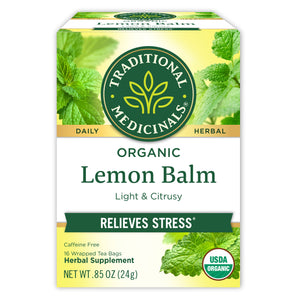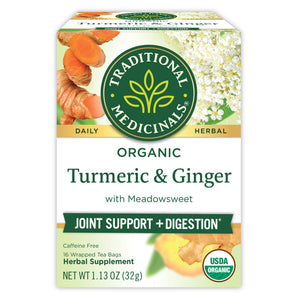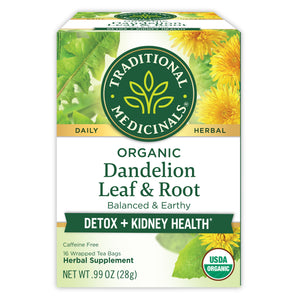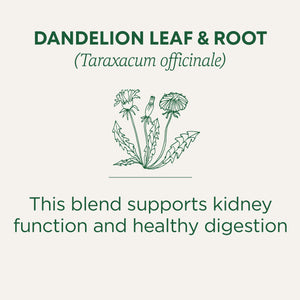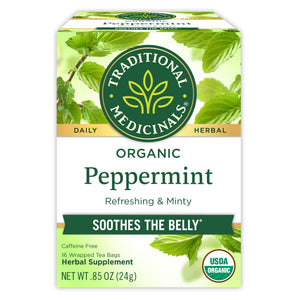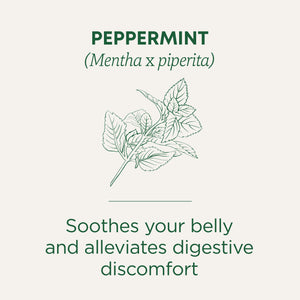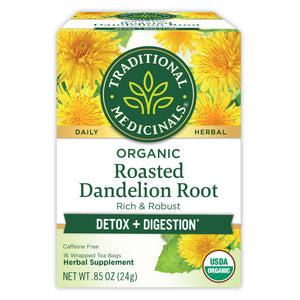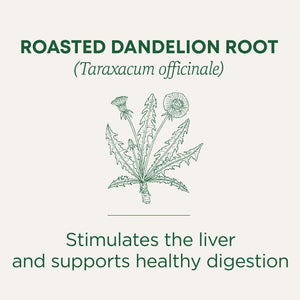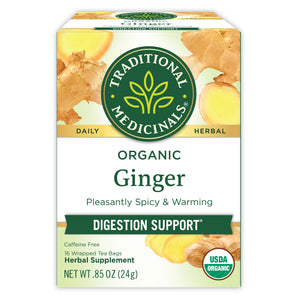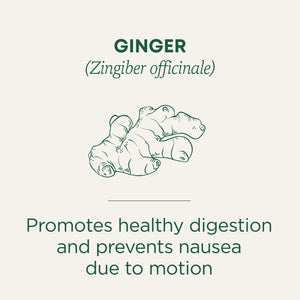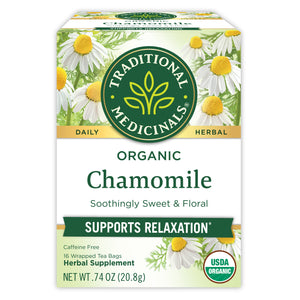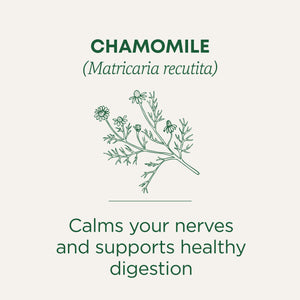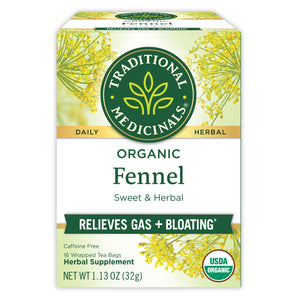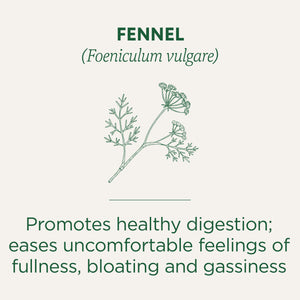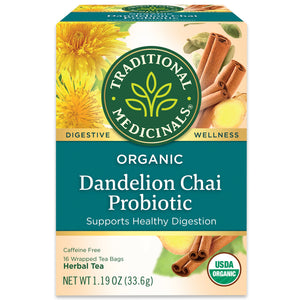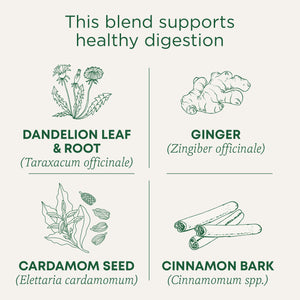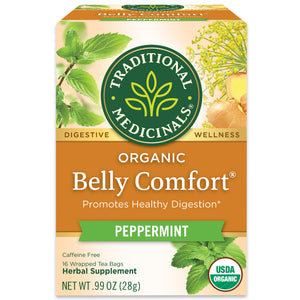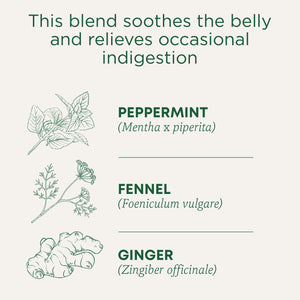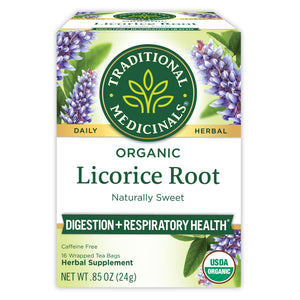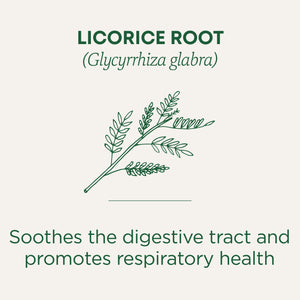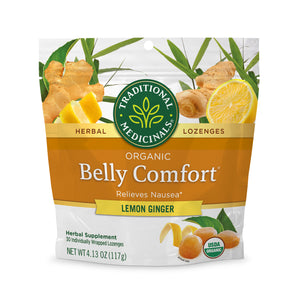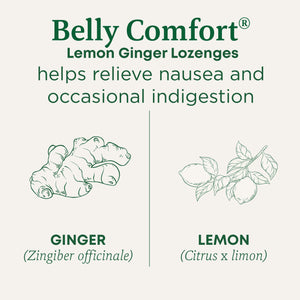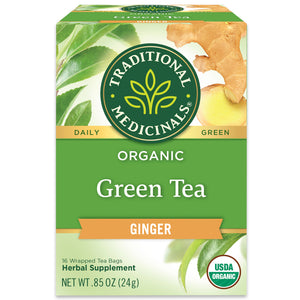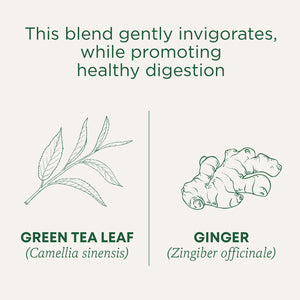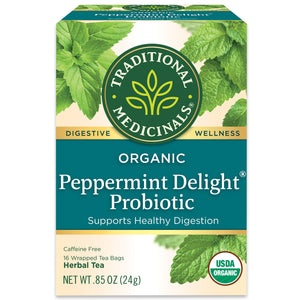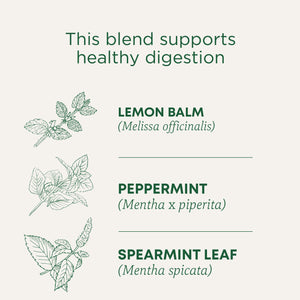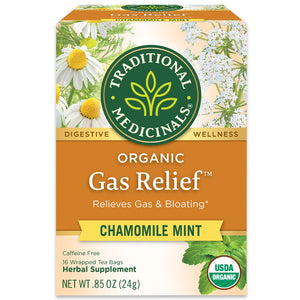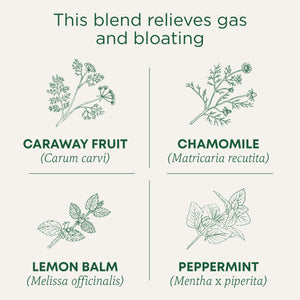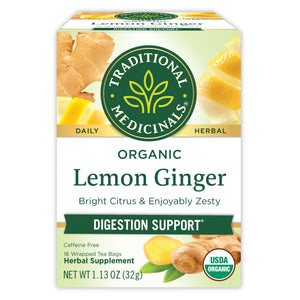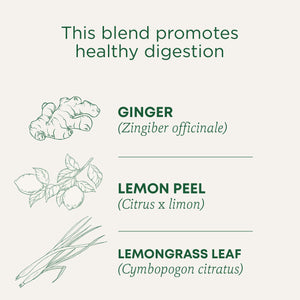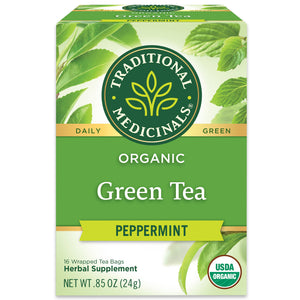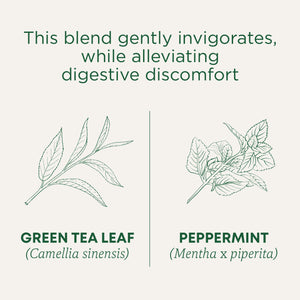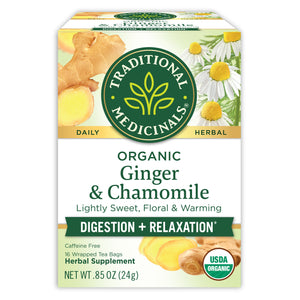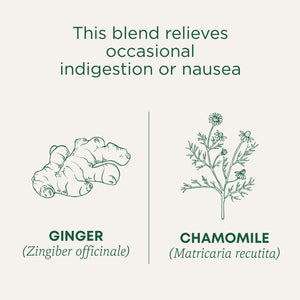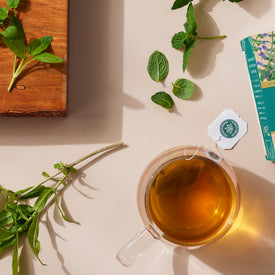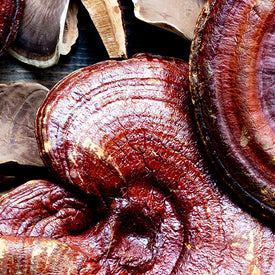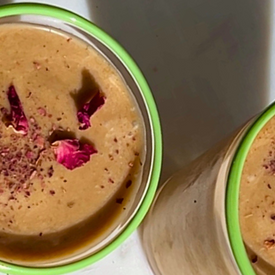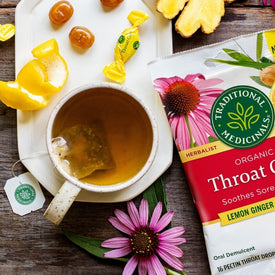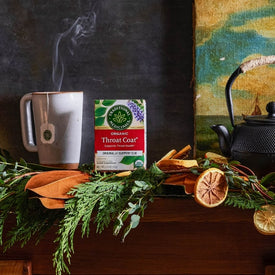Although it’s well known and quite commonly grown, we think peppermint is a bit of a rare bird – one whose song shines in a solo, but also harmonizes beautifully with others. The peppermint in our teas isn’t afraid to take the stage; many plant people say that our peppermint is among the mintiest tasting around. And those clear, crisp notes come with belly-soothing benefits that have been celebrated by herb lovers for centuries.*
Although it’s not usually a wallflower, peppermint (Mentha x piperita) needs a little help in the reproduction department. A hybrid of watermint (Mentha aquatica) and spearmint (Mentha spicata), peppermint flowers are mostly sterile, so new plants are typically created through cuttings or division. Like its cousins, peppermint has a square-shaped stem and toothed leaves – a visual representation of its minty bite.
It’s no surprise that the traditional after-meal candy is a mint — peppermint has long been revered for its refreshing taste and its ability to aid digestion.* Dried mint leaves have been found in ancient Egyptian pyramids, and mint was so greatly valued in Biblical times that it is referenced in the New Testament as a payment for taxes. In Greek mythology, the water nymph Minthe was turned into a mint plant after a tryst with the god Pluto (an explanation for many mint varietals’ preference for moist soils). In the first century AD, the Roman naturalist Pliny noted that the Greeks and Romans used mint to flavor sauces and wine, and it is referenced in a west Nordic pharmacopoeia fragment of the 13th century. But it wasn’t until the 1700s that the peppermint we know today began to be commercially cultivated as a medicinal plant. It quickly spread from England to Western Europe and around the world, noted for its fresh flavor and its ability to calm cranky digestive systems.*
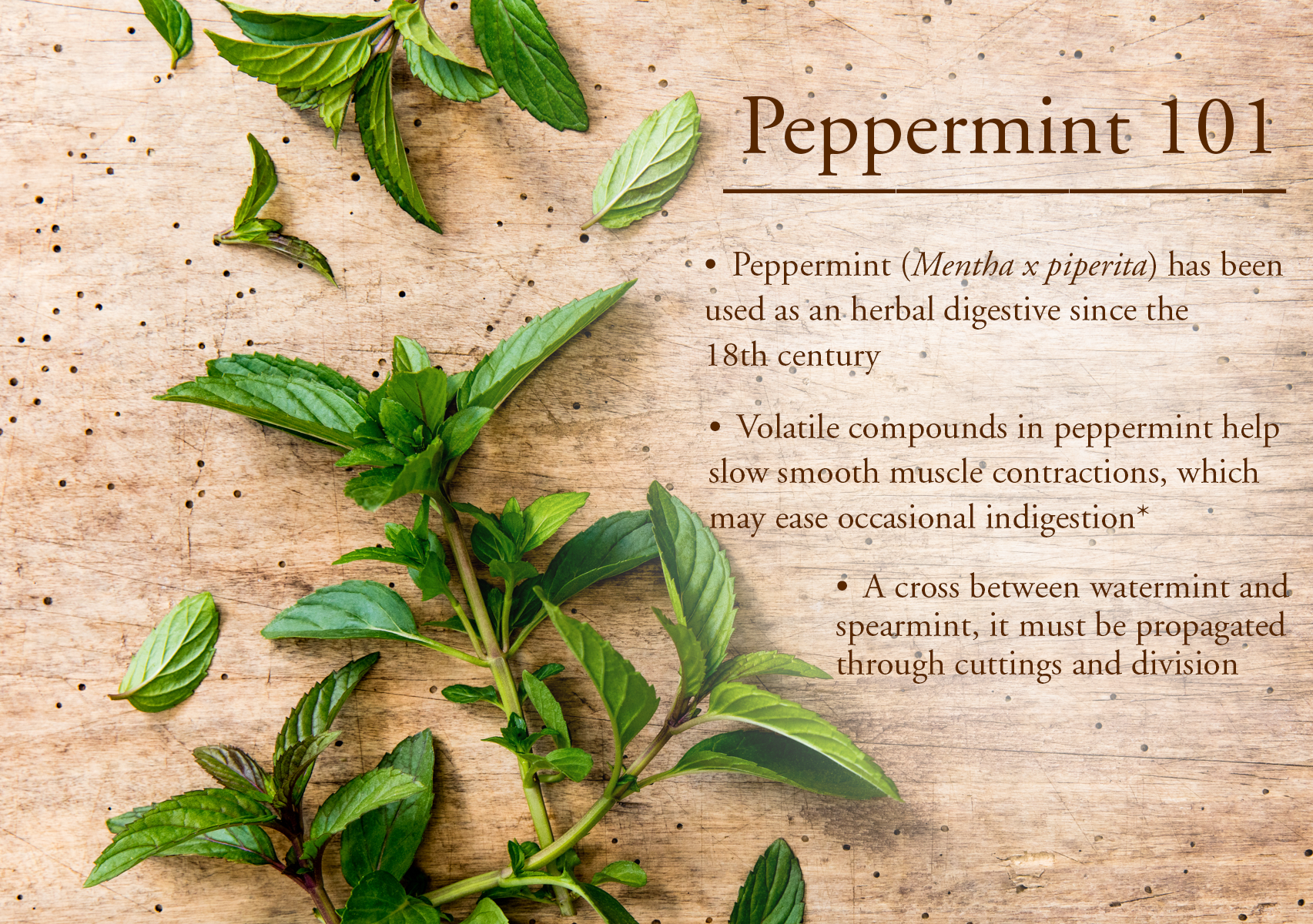
The unmistakably invigorating aroma of our peppermint can be credited to its high essential oil content, the hallmark of a plant that feels at home. We love the peppermint from Trout Lake Farm in Washington State for its distinctively minty flavor, so rich in essential oils that you might feel a tingle on your tongue when you taste it. The temperate conditions at Trout Lake (where the damp, cool breezes of the Pacific Northwest meet the warm, welcoming sunshine of drier Eastern Washington climates) are perfect for peppermint, which prefers moist soils and lots of sunshine. The folks at Trout Lake Farm have been using organic farming practices since before it was cool, making for some very cool peppermint, and that’s just one of the reasons we’ve been sourcing herbs from them since the 1970s.
You’ll find peppermint in many of our teas for digestive health, including Belly Comfort™ Peppermint, Gas Relief™, Peppermint Delight™ Probiotic, and Smooth Move® Peppermint. But many of peppermint’s biggest fans love it for more than its tummy-taming benefits; it’s the crisp, uplifting flavor that keeps them coming back for more. It’s a crowd-pleasing classic, perfect for an after-dinner curtain call or to accompany a cozy afternoon.


